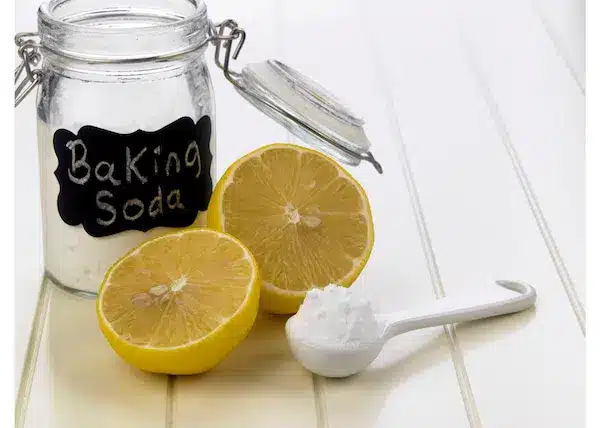The Environmental Impact of Fall:
Welcome to autumn. This time of year, the leaves change to warm colors and the air smells like fallen leaves. It is a good season to feel calm and enjoy the outdoors. As we enjoy the autumn activities, we need to think about our environmental impact. We will share recycling ideas that work in October. These friendly ideas can help you use recycling at home and make it feel more sustainable. Check out transforming your home into a haven of sustainability.

Autumn is a beautiful time. There is a lot to enjoy like the golden trees and cool air. But we need to think about environmental awareness. People use more stuff during autumn. There is more waste because of fall decorations and single-use items at parties and events. This means we make more trash in this season. We should be aware of how our actions affect the environment in autumn.
Many people use pumpkins during the fall. They are used to decorate our homes and also in food recipes. After we finish with them, most pumpkins get thrown away. This adds to piles of organic waste in landfills. When pumpkins break down there, they make methane. Methane is a greenhouse gas that heats up the atmosphere.
It is important to know how our choices matter to the planet. We can look for new and fun ways to use pumpkins instead of throwing them out. You can make compost with leftover pumpkins. You can also use pumpkins in different recipes in your kitchen. This helps cut down on waste. It is a good way to make sure resources go back into the use cycle and not into landfills.
Fall-related events and festivals often create a lot of plastic and packaging waste. You will see pumpkin spice snacks packed in plastic and many people use disposable forks and spoons at outdoor parties. That means there is more trash, which is not good for the environment. A smart choice is to use compostable or reusable tableware instead. This helps the planet and saves your wallet from extra costs.
The short life of fall decorations, like halloween decorations, shows we need better options. A lot of people use things like fake scarecrows or plastic items for halloween. All this can make a lot of waste. A good way to be better is to pick things that last a long time. You can also try diy projects with things that you can recycle. This helps to cut down on waste. It also makes people think more about what they use to make their places look good for halloween or any time during the year.
When we see the environmental impact of fall, it helps us think again about what we buy and use. We can make choices that fit with sustainability. If we pick reusable things instead of disposable ones, use materials to create upcycled home decor, and cut down on single-use items, we get to enjoy fall and take care of the planet at the same time. This shows how we can build a good balance between seasonal fun and looking after the earth.
Fallen Leaves Make Great Compost: DIY Composting Guide:

As trees start to lose their leaves before winter, the ground is covered with them. These fallen leaves are not just something to clean up in your yard. They are a useful resource. Trying a diy composting guide made for fall leaves gives your garden a boost. It also helps you turn this job into a good, green habit. With great ideas, this can be easy and helpful all year long.
- Understanding Leaf Composting: Fallen leaves from autumn are full of carbon. This makes them a key part of composting. The carbon in the leaves helps balance out the nitrogen that comes from things like kitchen scraps and other green waste. If you want the compost to work well, you need to have both green materials and brown ones. The leaves that drop during autumn give you plenty of brown materials for your compost.
Selecting the right leaves is important for making good compost. All leaves can help, but some break down faster than others. Large leaves like oak or maple should be shredded or mulched. This helps them decompose more quickly. Do not use leaves from trees that were sprayed with pesticides. These chemicals can upset the balance of microbes in your compost.
- Creating a Compost Bin or Pile: Pick a good spot for your compost bin or pile. Mix in shredded leaves, kitchen scraps, and green materials. This mix helps make the compost full of nutrients and lets helpful tiny things grow in it. Turn the compost often. When you do this, you add air and the mix breaks down faster. You can also use some leftover materials to make pencil holders.
- Layering Techniques: Add fallen leaves to the compost in layers. Put kitchen scraps or green items in between each layer. Doing this helps keep the right amount of carbon and nitrogen in the mix. This will help the compost break down well and be good for the soil. You can also put a layer of soil on top. The soil has important tiny things that help the waste break down faster.
- Balancing Moisture Levels: Keeping the right amount of moisture in your compost pile is very important. Fallen leaves add carbon to the pile, but they can be dry. You need to make sure the pile has enough water. Add water now and then to your pile or bin. This will help create good conditions for breaking down the material.
Composting takes time, so you need to be patient. This is a slow process. Check on your compost pile often. Look at the temperature, smell, and what it looks like to be sure it is breaking down like it should. If you take care of your compost, you can turn those fallen leaves into humus full of nutrients in just a few months.
- Using Compost in the Garden: When your compost is ready, add it to the soil in your garden. This compost is rich in nutrients and acts as a natural fertilizer. It can help make the soil better and keep your plants healthy. Doing this is a good way to be more sustainable. It helps to cut down on waste. It also brings the cycle of leaves falling and returning to the earth full circle.
By changing fallen leaves and everyday objects into compost, you help your garden grow and keep waste out of landfills. In landfills, this waste would let out methane, which is a strong greenhouse gas. This diy composting guide shows how a small task, like making compost, can be good for your garden and help the planet at the same time.
Biodegradable confetti with leaves
Making biodegradable confetti out of fallen leaves is a fun way to be eco-friendly. This easy tutorial shows you how to go out, pick up bright autumn leaves, and then cut them into little pieces you can use for decoration. If you want to bring a bit of magic to your Halloween or autumn gatherings, this is a good choice. It helps cut down on waste and gives your party something special. Using leaves, you help look after the earth and raise environmental awareness at the same time. Spend some time with family to turn old yard leaves into pretty, reusable confetti. It’s a great way to feel the fun of fall and boost sustainability in what you do.
October Organizing: Repurposing Common Household Items:

As the air gets cool and the leaves change color in October, it’s a great time to take another look at how we use our home spaces. We can make our homes both practical and eco-friendly. Instead of buying new storage tools, try finding uses for things you already have that are just lying around the house. You can use Mod Podge and some easy tricks to help you keep your home neat and cut down on waste. This October, let’s all make their spaces better by thinking more about eco and sustainability.
- Repurposing Furniture: You can give furniture a new life by making it fit more than one use. Take an old wooden ladder to use as a nice blanket rack. It holds your blankets and also looks good in the room. You can use wooden crates to make shelves for your decorative items. Stack them up and they become handy storage bins. It’s a good way to bring forgotten pieces back into your home.
- Creative Storage Solutions: Try some new ways to use everyday things around the house. Turn glass bottles into something useful, like storage for small items. Mason jars are not only for jams. You can use them to keep things like makeup brushes, pencils, and kitchen tools. If you have vintage suitcases or wine crates, they can be reused as stylish bins for more storage. These ideas bring character from local thrift stores into your space.
- Clever Kitchen Organization: The kitchen is a nice spot for diy repurposing too. Use an old wooden pallet as a rustic rack for your spices. A wine rack is good for several things, like saving space and rolling up dish towels. Try out these new ways to get the most out of your kitchen room, make it feel creative, and keep it tidy.
- DIY Closet Makeover: October is a good month to update your closet with items from local thrift stores. You can turn old wooden hangers into simple jewelry holders. A ladder from a local shop can become a fun shoe rack. These new ways give
Bookshelf Innovation: If you want to organize your bookshelf, you can use old wooden crates as bookends or as bins for small things. Adding plants is a great way to bring some nature into the setup. You can do this by using old planters or making new ones from recycled stuff. This gives your bookshelf arrangement a fresh feel.
- Sustainable Tech Storage: It can be hard to keep electronic devices and their cables in order. Use old shoeboxes or magazine holders from your pantry to set up a simple charging spot. This will help cut the mess from too many gadgets. You will also be able to find and charge your devices fast when you need them.
By using scissors to find new uses for common things in your home, you can clear out clutter and help the earth at the same time. By embracing the art of repurposing common household items, you make your place feel better and support sustainability. This October, you can look around your house and turn everyday stuff into useful items. These items will not just work well, they will also show what you and your family can make when you care about sustainability and creativity.
Planters made from tin cans
Turn leftover leaves into biodegradable confetti for a colorful eco decoration. This easy idea helps cut down on landfill waste and gives your autumn or Halloween decorations a fresh feel. If you have an old magazine, you can also use pages to add more style. Just grab some scissors and plan a little. You can repurpose yard waste into fun, creative confetti. Try to collect leaves that come in different sizes so the look can be even more interesting. This is a simple craft project that’s good for both Halloween decorations and making any home feel a bit more eco and creative.
Magazine clippings to bows for presents
Turning fallen leaves into biodegradable confetti is a fun way to cut down on waste and add some color to your autumn gatherings. Just pick up leaves with bright colors, and use scissors to cut them into different shapes. You can sprinkle this eco confetti over tables at Halloween or any cozy fall party. This simple craft not only gives your decorations a fresh feel but it also helps people think more about environmental awareness and sustainability.
When you bring nature into your celebrations and use scrap fabric along with leaves, you put new life into what might be tossed away. This creates an eco choice that is better than regular confetti. It’s a small step that helps make your party feel good for people and the planet.
Shoebox DIY idea
Making biodegradable confetti from fallen leaves is a good way to enjoy Earth Day and autumn without hurting the environment. Pick up dry leaves, cut them up into small bits, and add some natural dye if you want bright colors. This type of eco confetti is great for halloween decorations, autumn weddings, birthday parties, or any event you have. Using everyday objects, like leaves, helps with sustainability. You also get to be creative. Taking what you find in nature and making decorative items lets you add your own feel to any festive time. This simple act keeps the environmental impact down, which is good for all of us.
Eco-Friendly Fall Cleaning Tips:

As we welcome autumn, cleaning our homes can be about more than just picking up and wiping down. It can help make your space healthier and better for the world. Try using natural cleaning products, and look for other ways instead of using paper towels. You can make a simple cleaner with things like vinegar, baking soda, and essential oils. Using these things can help you stay away from strong chemicals. They also keep the water cleaner when you wash things down the drain.
Get into DIY cleaning this fall. Make your own cinnamon scent dust spray for a warm feel. Or try a fresh citrus surface cleaner to brighten things up. These DIY cleaners help you clean better. The good thing is you can use a plastic bottle you already have at home to make them. Be sure to aim for the bottom of the bottle when you use your cleaner. That way, you get out all the last bits. Using these ideas, you can keep your home nice without much trouble.
Think about how you get rid of old cleaning supplies and things that might be bad for the environment. A lot of regular cleaning products come in packaging that you cannot recycle. This adds to plastic waste, like all the empty plastic bottles you use and throw out. The best thing to do is look up what recycling programs there are near you, and see if they take those kinds of items. You can also find new ways to use that packaging for your diy projects instead of just throwing it away.
As the days become shorter and there is less sunlight, you should try using energy-efficient lights. Go for LED or CFL bulbs. These bulbs use less energy than regular ones. They work for a long time. You can reuse them several times. This means you do not need to buy new bulbs as often. It also makes less waste. Making this change helps the environment. It can also save you money over time.
Take your eco-friendly cleaning to the laundry too. Use cold water in the washing machine. This can help cut down on energy use and also keep the bright colors in your fall clothes. Try using laundry detergents that are eco-friendly. Choose ones that do not have many harsh chemicals and are made to break down in the environment. This way, your laundry fits with your goal of sustainability.
Fall cleaning gives you a chance to refresh your home and decide what items feel right to keep. You can find new purpose in the things you own. If you bring eco ideas into this practice, it helps you make the space healthier for your family and yourself. At the same time, you do good for the planet. When you choose eco-friendly ways to clean, you help keep the beauty of fall around for those who come after us.

As the leaves drop and the air gets cool, let us keep doing our best for a life that is good to the earth. These October recycling projects, like making acorns for decoration, help to cut waste and bring more fun and creative ideas into your life. You can feel good about making things and about being kind to nature. Tell others about your recycling stories and connect with people who also care about eco and green work. This October, we can all do our part for green living. It’s a good time to start with sustainability, and every step you take brings you closer to a better way of living!

